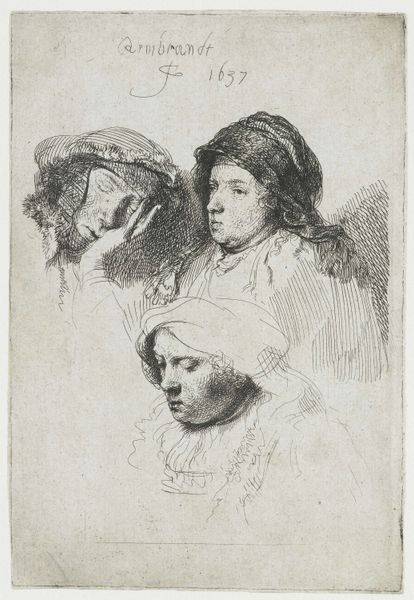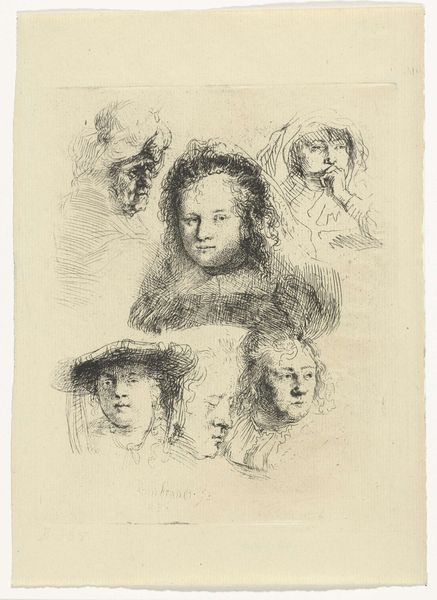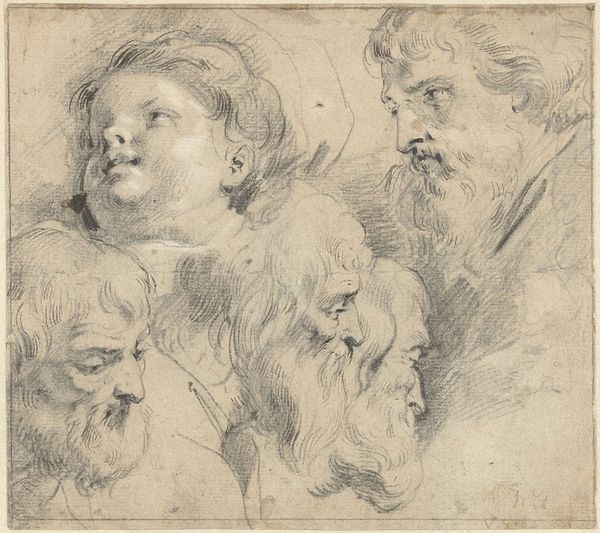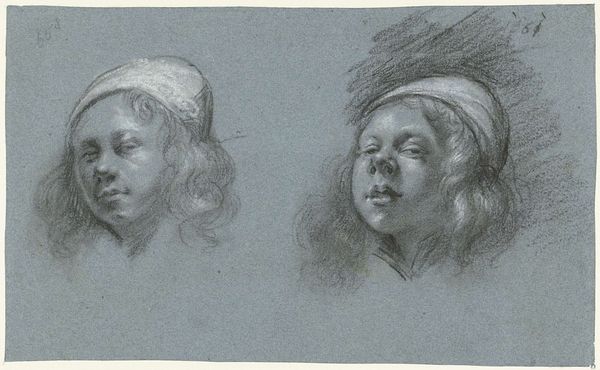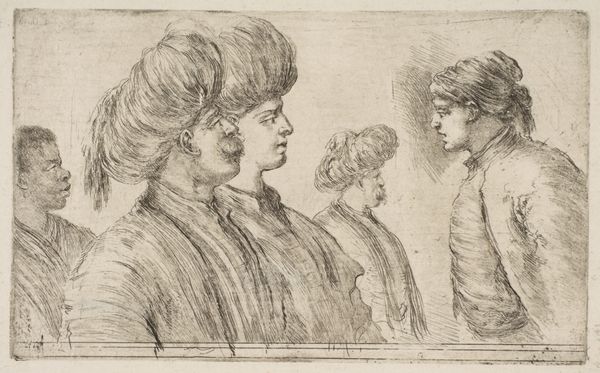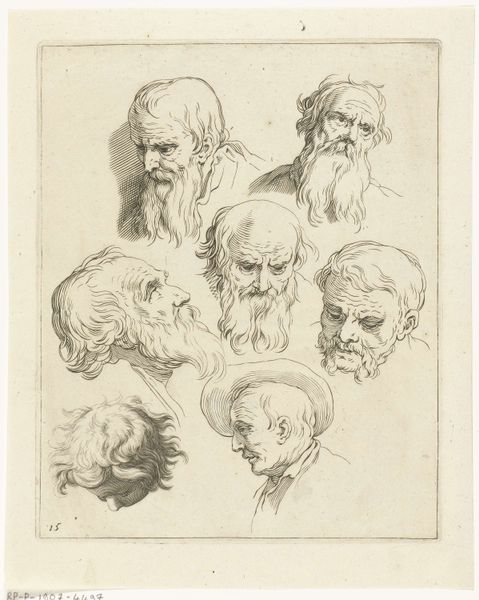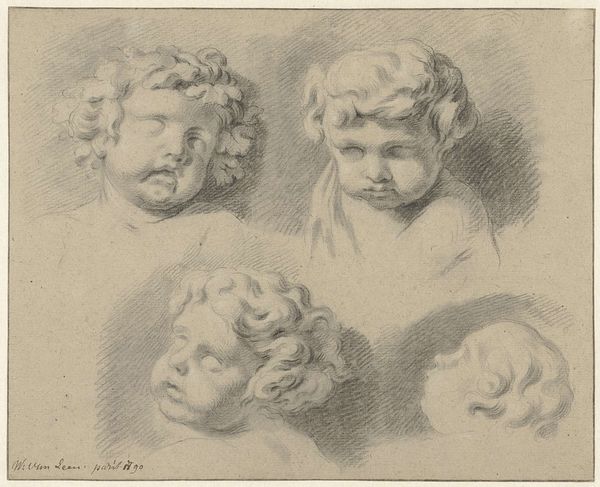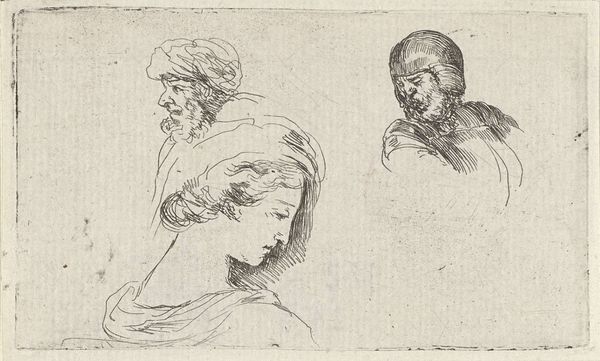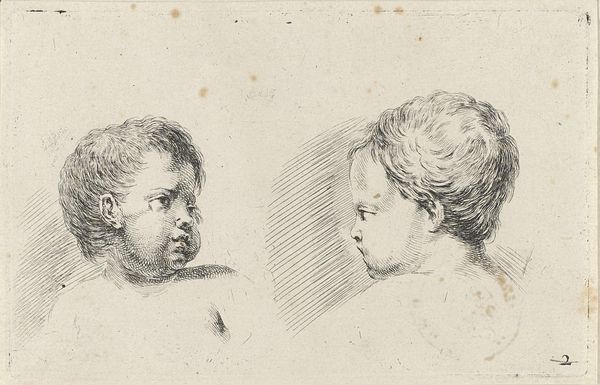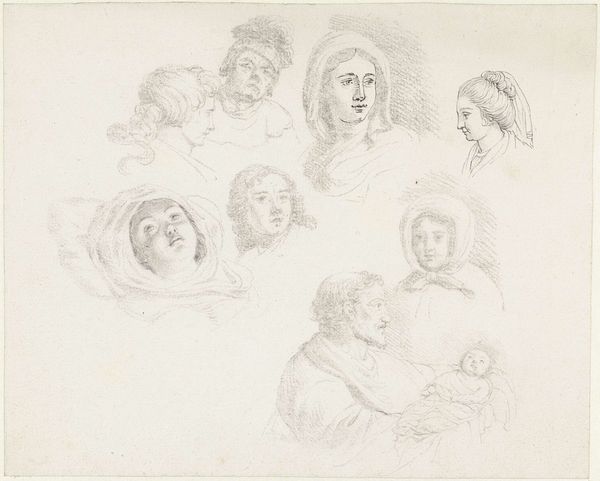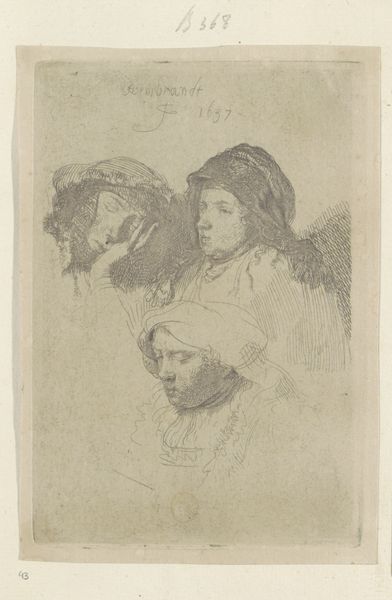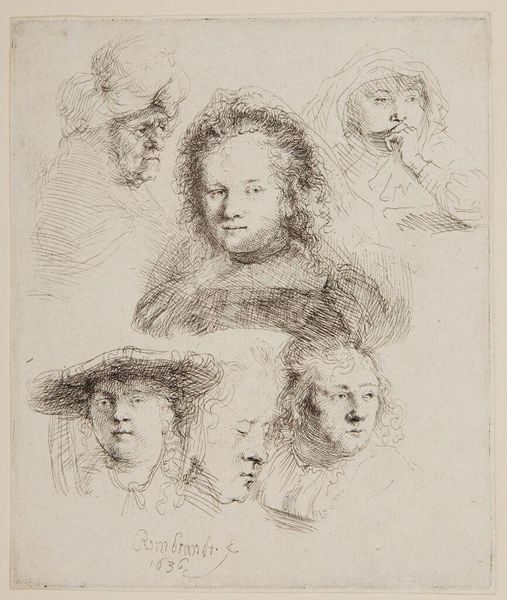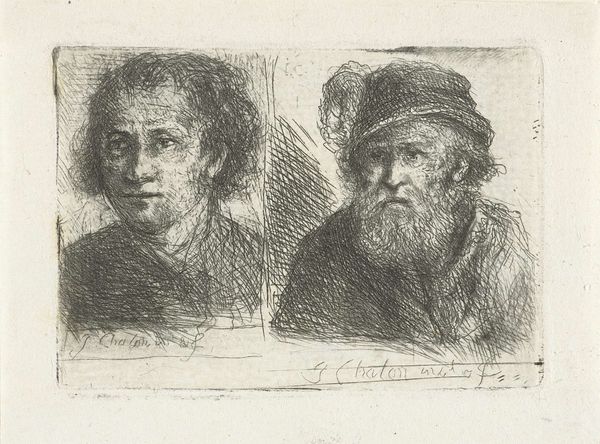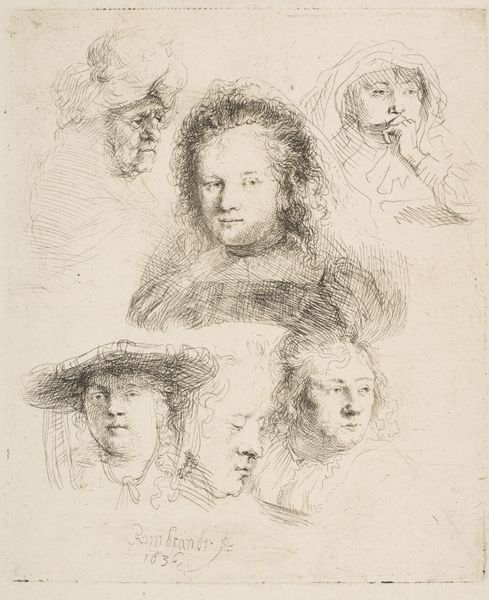
Hoofd van oude man met tulband, van twee jongemannen en van twee kinderen 1620 - 1664
0:00
0:00
drawing, print, etching
#
portrait
#
drawing
#
baroque
# print
#
etching
#
pencil sketch
#
figuration
#
child
#
pencil drawing
Dimensions: height 117 mm, width 151 mm
Copyright: Rijks Museum: Open Domain
Curator: Looking at this sheet of studies, it’s called "Hoofd van oude man met tulband, van twee jongemannen en van twee kinderen" created between 1620 and 1664 by Stefano della Bella, now at the Rijksmuseum. The medium is etching, falling under the broader categories of drawing and printmaking. Editor: What strikes me is the contrast. That central face, deeply lined and shadowed, surrounded by these airy, almost ethereal faces of youth. There’s a very distinct directional pull with each focal point drawing my eye around the picture plane. Curator: Precisely. These "sheets of studies" were common. Artists made these rapid sketches from life, or from other works. This allowed them to keep a repository of model features for their own large compositions. We can also interpret that the Royal Privilege declaration, "Avec privilege du Roy," indicates an official sanction and protection against unauthorized reproductions of this etching. Editor: And, of course, etching lends itself beautifully to that quick, iterative process. Look at the variations in line weight and density. Some lines are tentative and light, exploring the contours, while others are decisively etched to define shadow and volume. The baroque handling of line brings dynamism to otherwise static portraiture. Curator: I’d add that Stefano della Bella operated within a patronage system where access to the royal court and official commissions significantly impacted artistic production. Think about how the social status of the artist influenced the subject matter and its reception. These works found their audience among other artists, collectors and connoisseurs with access to Bella’s prints and drawings in their original forms. Editor: A network then which the formal composition facilitated—allowing for swift sharing of emerging methods and modes of expressions. You can imagine artists responding and innovating just by using such sheets for studies. Thank you, that’s shifted my thinking entirely. Curator: Mine as well! Examining artwork as both documents of artistry, and markers within a complex historical and social structure unveils so many hidden contexts.
Comments
No comments
Be the first to comment and join the conversation on the ultimate creative platform.
